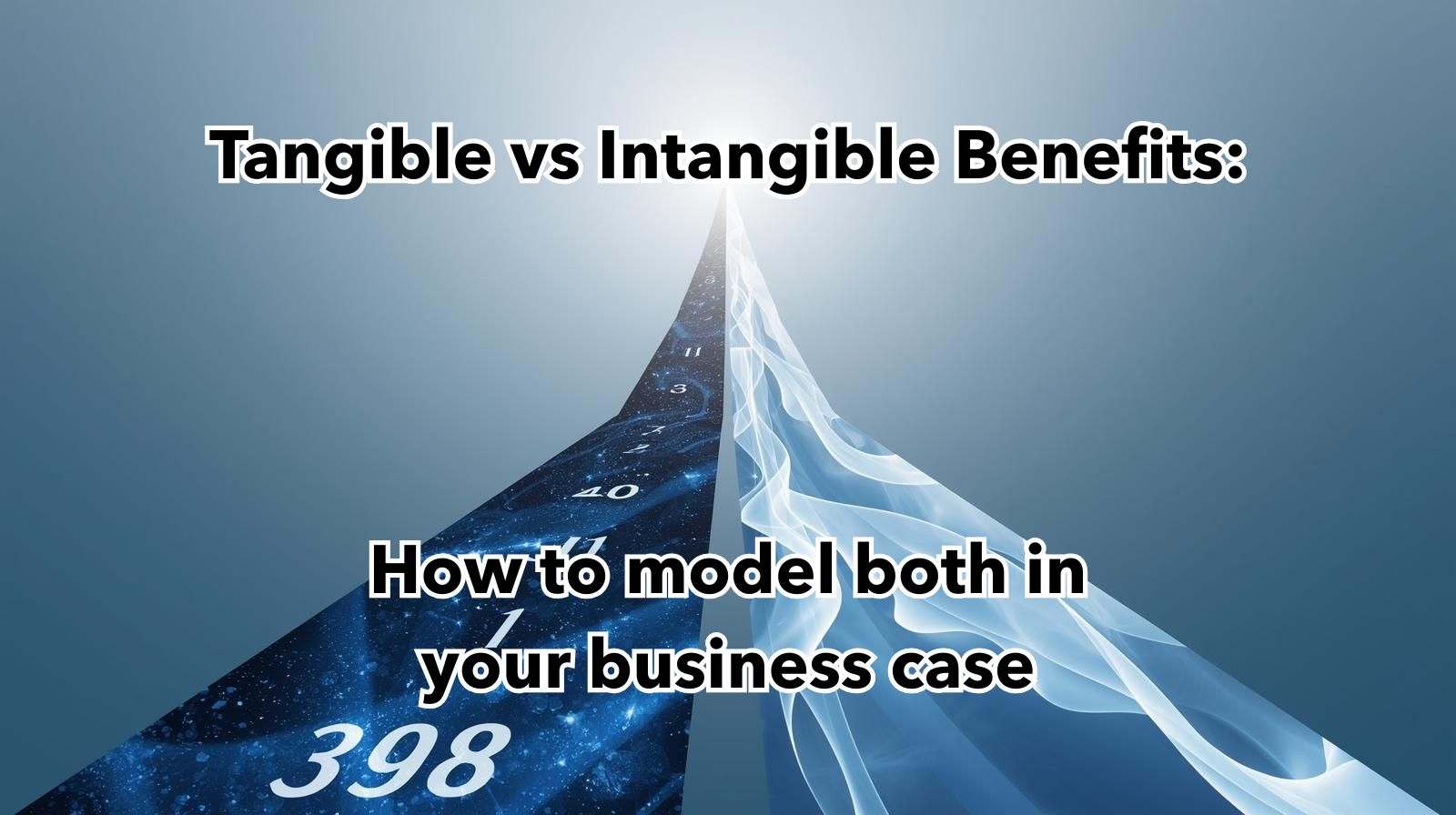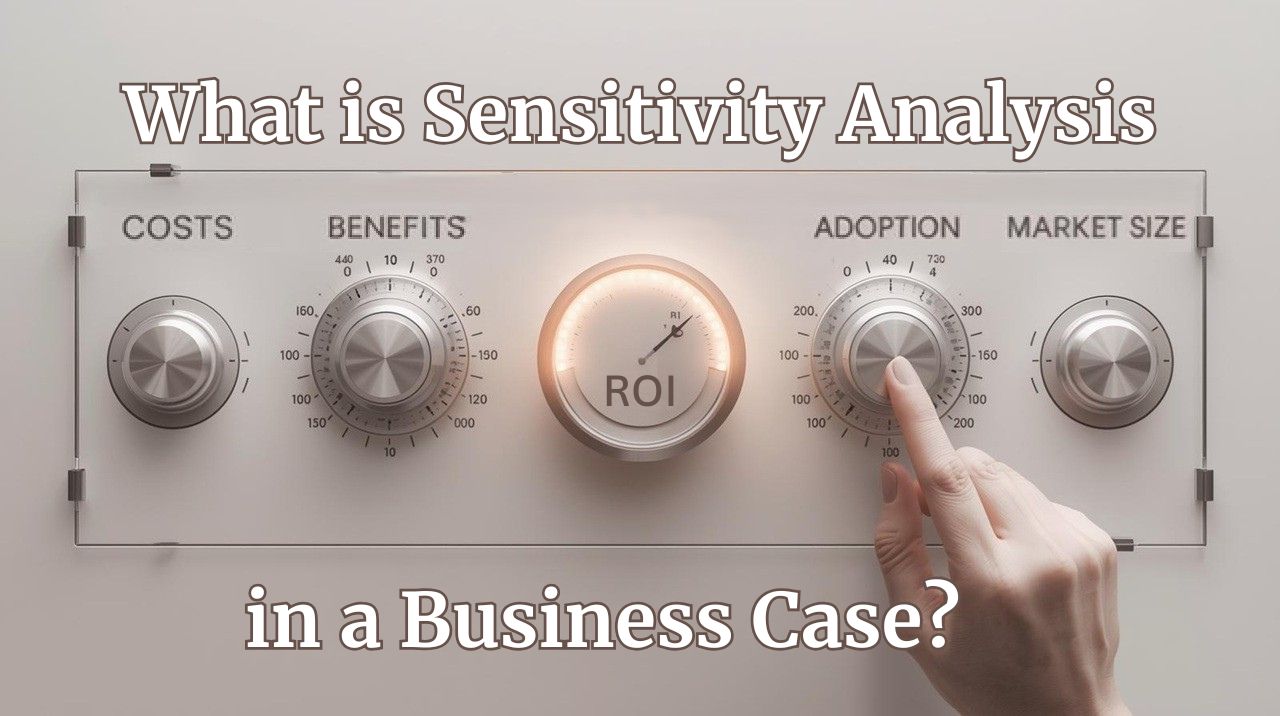If a person woke up every day unable to remember what they’d done the day before, we’d call it amnesia; it would be a medical crisis and a life-altering condition. Yet when organizations behave this way (forgetting the outcomes of past projects, ignoring lessons hard-won by experience, and starting each new initiative as if no history exists), for some reason we treat it as absolutely fine, and business as usual.
Every year, businesses invest billions in new initiatives, backed by carefully crafted business cases. It’s a tale as old as time; forecasts are polished, ROI figures are projected, risks are minimized on paper, approval is granted, budgets are allocated, delivery teams march forward. And then, like clockwork, the business case itself is quietly filed away.
Months later, when the dust has settled, almost no one goes back to check whether the promises held true. Did adoption hit the levels forecasted? Did the savings materialize? Was the risk analysis accurate? More often than not, those questions are left unanswered, and the inevitable result is a kind of corporate amnesia; an inability to remember how, what, why and, when anything actually happened, and therefore an inability to learn.
And just like amnesia in an individual, this condition carries a hell of a cost.
The anatomy of forgetting
This forgetting usually starts at approval, as in my experience (of companies big and small, no matter where you are in the world), once a project gets the green light, the business case is treated like a ticket to be stamped, not a document to be revisited. After all, as far as most people are (wrongly) concerned, it’s served its purpose; the goal was to secure funding, not to form a living benchmark.
Even when post-project reviews are conducted, they’re often seen as a box-ticking hassle; you do them because you’re told to, not because you want to, as you know that in your company, nothing useful has ever actually come out of a post-project review. So it’s time to go through the motions; a slide deck labeled “lessons learned” gets created, presented once, and then buried in a project folder in a shared drive where no one will ever look again. The result is that knowledge isn’t captured (let alone systematically) or structured in a way that could ever inform future decisions.
The next time a similar project kicks off (say, a system migration, a new product launch, or an efficiency program), the business case team starts from scratch. Forecasts are built on generic industry benchmarks or wishful (or even willfully overly optimistic) assumptions, not on the organization’s actual history. The same risks are underestimated, the same benefits are overstated, the same adoption challenges are overlooked.
It’s as if the organization has no memory of its own experiences, and that’s because…well, it doesn’t.
The real cost of amnesia
The thing is, it’s not as if this kind of forgetting is harmless as it causes a heavy price across wide-ranging areas:
🔄 Repeated forecasting errors
The reality is that on the vast majority of projects, adoption is almost always slower than expected, benefits are slower to ramp up, and costs are underestimated. Without tracking actuals against forecasts, there’s no correction mechanism, which means that the same forecasting errors recur, project after project.
💸 Wasted capital
Organizations end up funding initiatives that look good on paper but consistently under-deliver, as they just don’t know any better. When there’s no accountability loop, this cycle just perpetuates.
🤝 Erosion of trust
Once an org is caught in this trap of over-promising and under-delivering, Executives will quite rightly begin to treat business case figures cynically, as they know that the numbers are inflated, but they approve projects anyway because that is the game. This means that over time, the business case itself loses credibility as a decision-making tool.
🐌 Cultural stagnation
Teams lose the chance to build compound knowledge, so (to slightly butcher the words of Isaac Newton with a mixed metaphor) instead of standing on the shoulders of past experience, they trip over the same lose paving slabs again and again.
🔙 Losing ground to rivals
Although the vast majority of firms make this mistake, that’s not to say that they all do, so while one organization relentlessly forgets, another may remember, compounding its learnings. Competitors that embed organizational learning improve their forecasting accuracy, refine their risk models, and sharpen their execution over time, leading to that gap widening.
Why it persists
Now that we’ve seen how widespread (and frankly unnecessary) this corporate amnesia is, it’s only logical to ask ourselves why organizations tolerate it. As far as I can tell, there are three main reasons:
🎭 Cultural
You’ll be hard pushed to find a company that doesn’t claim to be some combination of “led by data”, a “safe space for bold ideas”, where “every outcome is a lesson” or is “blameless by design”, but the reality is that failure is often taboo. Success stories are shared widely but failures are quietly brushed under the carpet. Post-mortems become performative rather than constructive (so by definition, effectively become useless), and the instinct is to move on quickly rather than to linger on uncomfortable truths.
🏛️ Structural
Governance models usually emphasize approvals, not outcomes, as Boards and committees demand business cases up front, but then rarely mandate actually reporting back against them. This means that once a project is signed off, accountability dissolves, as human nature means that if no one is checking up on something, chances are complacency and inefficiencies will creep in.
🛠️ Tooling
Static documents (Word files, PowerPoints, spreadsheets etc) are built to persuade, not to persist. They don’t evolve, they don’t update, and they certainly don’t remember. What they’re good at is capturing a forecast at a point in time, but what they aren’t designed for is to compare that forecast to reality or feed the results into future decisions.
In short, corporate amnesia persists because the current systems in place are designed to forget.
The psychology of forgetting: why we repeat mistakes
However, corporate amnesia isn’t just about missing processes or outdated tools; it’s also about human psychology. Although I’m never afraid of crowbarring Economics into any topic, in this instance, it is actually relevant as Behavioral Economics provides us a lens to understand why organizations fall into the same traps, even when the evidence is available.
🌞 Optimism bias
Maybe not the cynics among us, but people in general consistently believe that the future will turn out better than the past (the old “This time will be different” motto). This means that forecasts for adoption, revenue, and efficiency gains end up full of sunshine and smiles, even when history points to a bit of drizzle and a frown.
📋 The planning fallacy
On the whole, teams underestimate the time, cost, and complexity of projects; deadlines are assumed to be achievable, even though similar initiatives have overrun. This fallacy is allowed to persist because past delays aren’t systematically captured or factored into new estimates.
❤️🩹 Survivors bias
In the majority of organizations, success stories are highlighted to much fanfare, whereas failures are much more likely to just be quietly buried. The result is that when trying to build assumptions for future projects, past projects that under-delivered tend to be forgotten, while the few that went well get given an undeserved weighting as they get held up as proof that bold projections are both realistic and, more damagingly, that they usually come off.
☑ Confirmation bias
We could also call this “cherry picking” but human nature means that business case authors are no different to the rest of the population; they look for data that supports the case they want to make, and ignore or discount information that suggests risk.
These biases create a fertile ground for corporate amnesia, and without a system to anchor forecasts to actuals, most organizations’ natural tendency is to just repeat the same mistakes, under the comforting blanket of “don’t worry, this time we’ll get it right”, despite there being no evidence that they will.
However, all hope is not lost; just as cognitive biases can be understood and mitigated in individuals, they can also be countered at the organizational level. The antidotes to systematic memory are data and processes that confront optimism with reality, replace assumptions with evidence, and turn bias into balance.
What other industries can teach us
It’s easy to believe that forgetting is inevitable, yet in some fields, amnesia just isn’t tolerated. These industries treat memory as a non-negotiable, and the results have been pretty transformative, something that all of us in other industries can learn from:
✈️ Aviation
Every accident, no matter how small, is investigated thoroughly. Findings are shared globally, not buried, with lessons then codified into training, checklists, and regulation. As a result, commercial aviation is one of the safest industries in the world. The key to this is that the system doesn’t rely on individuals remembering; it embeds memory into the structure.
🩺 Medicine
Hospitals conduct morbidity and mortality conferences where failures are openly examined, with the purpose being not to assign blame, but to learn. Clinical guidelines then evolve from these lessons, ensuring that patient care improves over time.
💲 Finance
Financial forecasts are audited against actuals (now there’s an idea…. What if ROI was audited like Financials?), which means that a company can’t simply present rosy projections year after year without ever reconciling them with reality, with the result being that the discipline of auditing creates both accountability and credibility.
The contrast with corporate projects is stark; a transformation initiative can miss its ROI target by 60 percent, and no one outside the project team may ever even know, as the business case gets quietly filed away, the lessons lost, and the cycle resets, ready to miss our next target by 60% again.
Other industries have shown that memory can be institutionalized. The question is why business cases (despite often involving millions in capital and strategic importance) are left outside this discipline.
Breaking the cycle
The cure for amnesia is memory, not at the individual level, but institutionalized into process, culture, and tooling. Organizations need a closed learning loop for business cases, where every forecast is eventually tested, every outcome recorded, and every lesson carried forward. That loop includes:
📊 Tracking forecast vs. Actual ROI
Not just at the end of a project, but at key milestones along the way.
📆 Regular check-ins
Capturing and enacting mid-course corrections, rather than waiting for a post-mortem that few will read, and even if they do, by which time it will be too late.
⚖️ Risk and compliance insights
Recording which risks materialized, which controls worked, and where the blind spots existed.
📈 Adoption and benefit ramping
Understanding how quickly (or slowly) value was realized, if it met projections, and most importantly, why.
🧠 Accessible institutional memory
Building a retrievable library of business cases and outcomes, so each new case draws on the real experience of their own organization.
However, just capturing information isn’t enough; having the keys to a big library doesn’t instantly turn you into a genius, as you need to actually read (and understand) the books inside it. Memory must therefore be turned into foresight, and this is where tooling matters.
Spreadsheets and PDFs cannot connect the dots between past and future (something I’ve talked about previously at length). A purpose-built platform for business cases can. With Real ROI tracking, structured check-ins, and scenario modeling, tools like KangaROI embed organizational memory into the decision-making process.
And then there is the next step: applying that memory intelligently. This is the role of kAI, KangaROI’s AI Consultant. By learning from the performance of your past business cases, kAI gives tailored, company-specific guidance on new ones. It doesn’t just recall history; it interprets it, highlighting patterns and pitfalls unique to your organization.
In other words, kAI transforms memory into guidance. It helps ensure that the same mistakes aren’t repeated, meaning that each new business case is sharper, more grounded, and more realistic than the last.
This is how corporate amnesia is cured: not by asking individuals to remember more, but by building a system that remembers for the organization.
Choosing memory over amnesia
Corporate amnesia may be worryingly prevalent, but it’s not inevitable. It’s actually a choice (or, for the pedants out there, technically it’s the result of many small choices): choosing to bury post-project reviews, choosing to treat forecasts as disposable, and choosing to accept static documents as sufficient.
But just as amnesia is debilitating to a person, it’s strategically crippling to a business as it wastes capital, erodes trust, and slows progress. The thing to note though, is that the companies that succeed aren’t the ones that never make mistakes; they’re actually just the ones that learn from mistakes faster than anyone else. They do this by capturing lessons, institutionalizing them, and then applying them to the next decision, meaning they build compound knowledge, which translates into compound advantage.
The question to end on is pretty simple: will your organization keep forgetting and repeat the past? Or will it start remembering and shape the future?





